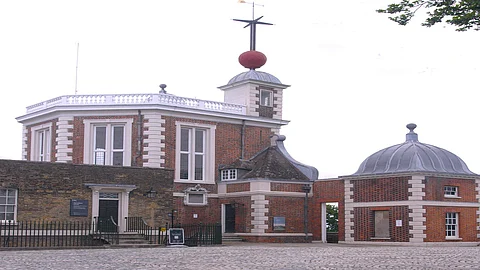

#Ajayan
Mark your moment now. The slender line tracing its path from a wall down a walkway in Greenwich, England, has etched its place in time and space. This is the Prime Meridian, the 0-degree longitude, a line that elegantly bisects the earth from the North Pole to the South Pole, dictating the rhythm of time for the entire world.
Until 1884, each locale danced to its own rhythm of time. From then until 1974, the Greenwich Meridian became the international standard, its influence stretching across the globe for timekeeping. This gave birth to the term Greenwich Mean Time (GMT), signifying the yearly average when the sun crosses this Prime Meridian. Later, the IERS Reference Meridian took its place, still rooted in the Greenwich Meridian but differing only slightly, continuing the legacy of marking time.
The entire endeavour was aimed to harmonize time based on clock precision, matching the average length of a solar day. GMT measures each day from one midnight to the next. While solar or astronomical time fluctuates with the sun's dance across the sky, each day under GMT is governed by the steady hands of a clock. When the sun reaches its zenith directly above the Prime Meridian at the Royal Observatory, it is precisely noon at Greenwich.
The imperative for time standardization arose from the maritime world of the mid-19th century as most of the trade was through seas. Mariners relied on GMT to calculate longitude from the Greenwich Meridian, a crucial tool for navigating the vast oceans. As the railway network expanded across 19th-century Britain, railway companies adopted a unified standard time, with GMT as their guiding star. By 1847, Great Britain officially adopted GMT, making it the definitive railway time, and thus, the rhythm of the nation's trains synchronized with the celestial dance above Greenwich.
Another reason for GMT's international acceptance was the United States' decision to anchor its national time zone system to Greenwich. This choice elevated the Airy Transit Circle telescope, nestled within the Royal Observatory, to a position of global prominence, defining the Prime Meridian. Thus, the celestial gaze of this instrument set the world's temporal heartbeat, bridging nations with the rhythm of time.
Outside the observatory gate stands the Shepherd gate clock, a sentinel of time displaying GMT to all who visit. Installed in 1852, this clock sent the precise time via telegraph wires to cities far and wide, even reaching the United States through the transatlantic submarine cable. Unlike ordinary clocks, the Shepherd gate clock boasts a 24-hour face, with its hour hand pointing downward at noon rather than straight up. Each day’s journey through 24 hours begins at midnight.
Greenwich welcomes throngs of visitors from around the globe, all eager to capture a moment beside the famed meridian. On the right lies the East Longitude, on the left, the West Longitude. The observatory, opening its doors just once a week, sees an overwhelming gathering, each drawn to this unique intersection of time and space. According to officials, the crowd that assembles on these special days is immense, allured by the wonder that is the meridian.
